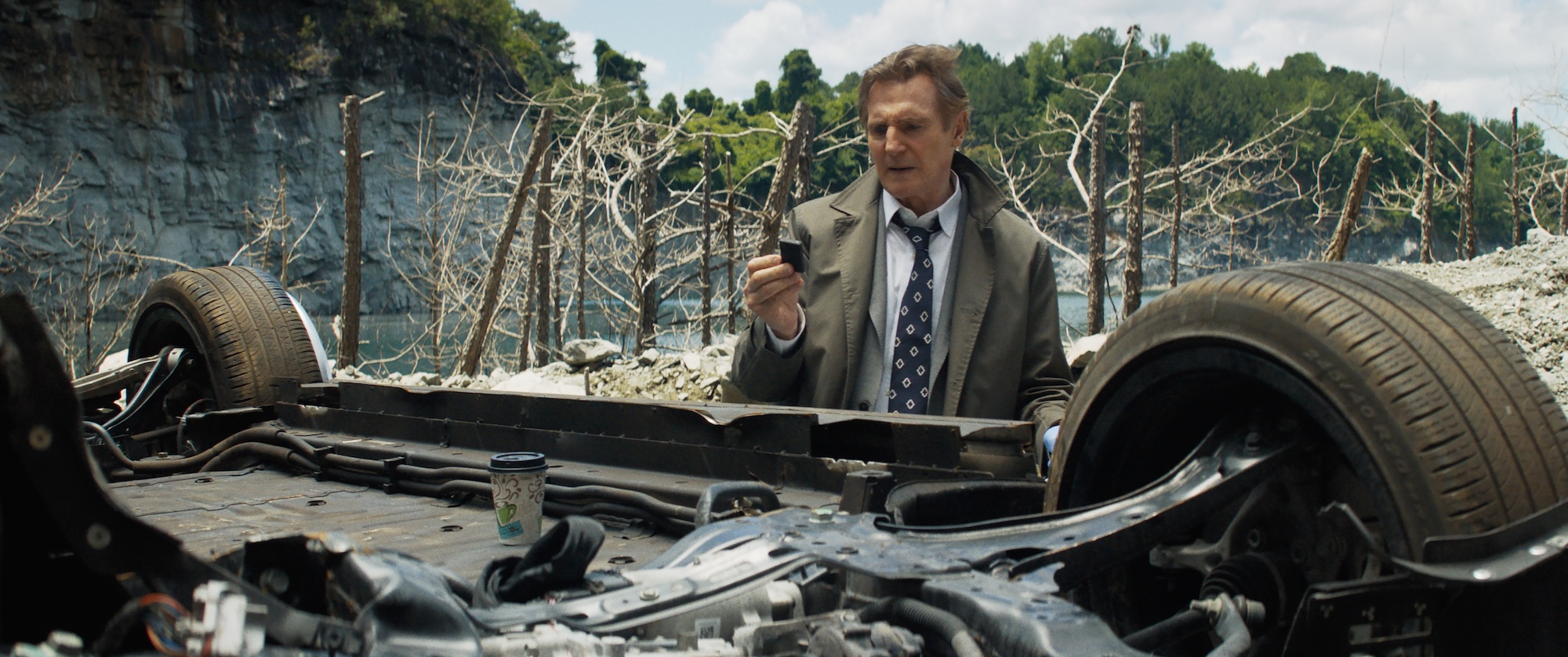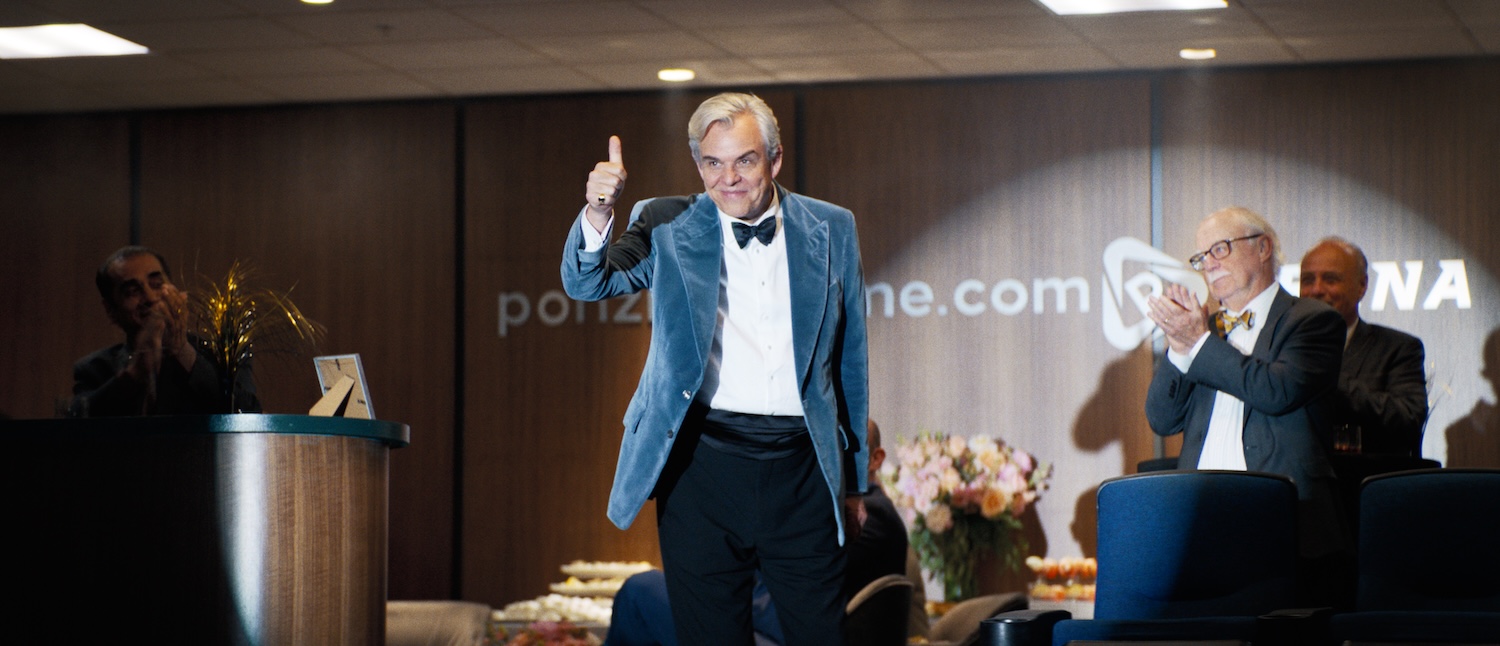Why Self-Driving Cars Are The Perfect Heel In ‘The Naked Gun’
Car crashes aren’t very funny. Unless, apparently, it’s a self-driving car. Researchers on public perception of these new vehicles explain why.
This is an article from our newsletter “Science Goes To The Movies.” To get a story about the science of popular movies and TV in your inbox every month, subscribe here.
In “The Naked Gun,” Liam Neeson (“Taken,” “Schindler’s List”) is our slapstick hero Frank Drebin Jr., the son of detective Frank Drebin from the original 1980s film. In this reboot, Neeson pays homage to his fictional father, but the villain he’s up against has a distinct 2025 energy. The film’s evil technocrat is an analog of Elon Musk—a purveyor of self-driving cars that crash throughout the story. The cars barrel into outdoor dining areas, crush fingers by way of an auto-closing door, and destroy the wall of a prison in a charging cable mishap.
Audiences will no doubt find it satisfying to see a movie make fun of billionaire tech gurus, but autonomous vehicles (AVs) are a very real part of our roads and cities. So why does seeing them crash and burn (onscreen) make us laugh?
Self-driving cars and advanced driver assistance systems use multiple types of sensors, like radar, LIDAR, regular cameras, and infrared cameras, that work together to detect what’s going on around them. However, each sensor has its own weaknesses. For example, LIDAR can fail in rain, snow, or fog. Cameras sometimes can’t tell the difference between the road and a wall with a very convincing picture of the road on it. And some systems, like Tesla’s Autopilot, don’t use the full suite of sensors to mitigate these weaknesses.

Dr. Kareem Othman, a civil engineer at The University of Toronto who studies the implications of emerging technologies, says that research broadly indicates that AVs are comparatively safe. For example, a 2024 study of thousands of autonomous and human-driven vehicle accidents found that AVs were less likely to be involved in an accident in most scenarios. AVs also can’t get drunk or fall asleep, which eliminates two common ways that human drivers cause accidents.
But the technology is still new. It varies across manufacturers and it can glitch to sometimes comedic and occasionally tragic effects. AVs also have to make split-second ethical decisions to minimize damage, like choosing between hitting another car or a barrier on the highway during a crash. (Hello, “I, Robot.”)
“It’s not easy to accept the idea that the machine will decide who lives and who dies,” Othman says.
Five years ago, the scientific literature agreed that the more knowledge a person had about AVs, the more acceptance they would feel towards them. But a string of highly publicized accidents and lawsuits had the opposite effect, and in 2023, Othman published a study showing that those who were more informed about AVs were more likely to take a more conservative attitude towards the technology.

Dr. Paurav Shukla, a professor of marketing at the University of Southampton and co-investigator at the Trustworthy Autonomous Systems (TAS) Hub in the UK, says that overpromising progress is part of why we delight in AVs’ mistakes.
“ Whenever [companies] have tried to overpromise and underdeliver, people have shunned them,” Shukla says, citing billionaire Elon Musk’s continual failure to deliver the autonomous vehicles he initially said would arrive in 2018. The result is confusion about the real costs and benefits of the product. “Less education, more hype, lots of negative attention, and you get a melting pot wherein trust starts getting deteriorated by every moment,” Shukla says.
Othman adds that technology adoption follows a pattern called the Gartner Hype Cycle: First, there’s a wave of excitement and optimism, followed by a sharp decline called the “trough of disillusionment” when the reality of using the product sets in, and then an eventual plateau of acceptance.

Othman says that in terms of AVs, we’re likely at the deepest point in the trough of disillusionment—a phenomenon compounded by the staggering political power companies like Google and Tesla have compared to the consumers they’re courting. It sets up audiences to laugh at all the ways products of these powerful conglomerates can fail. However you see it, “The Naked Gun” proves that self-driving cars have permeated modern life and entered into the cultural zeitgeist—whether we’re laughing or not.
Absolutely. In the past decade’s drought of good comedies, I forgot that it was possible to laugh until you cried during a movie. I would like to personally thank director Akiva Schaffer, who is now my favorite member of the Lonely Island.
“The Naked Gun” is in theaters now.
Emma Lee Gometz is Science Friday’s Digital Producer of Engagement. They write SciFri’s “Science Goes To The Movies” series and are a journalist and illustrator based in Queens, NY.